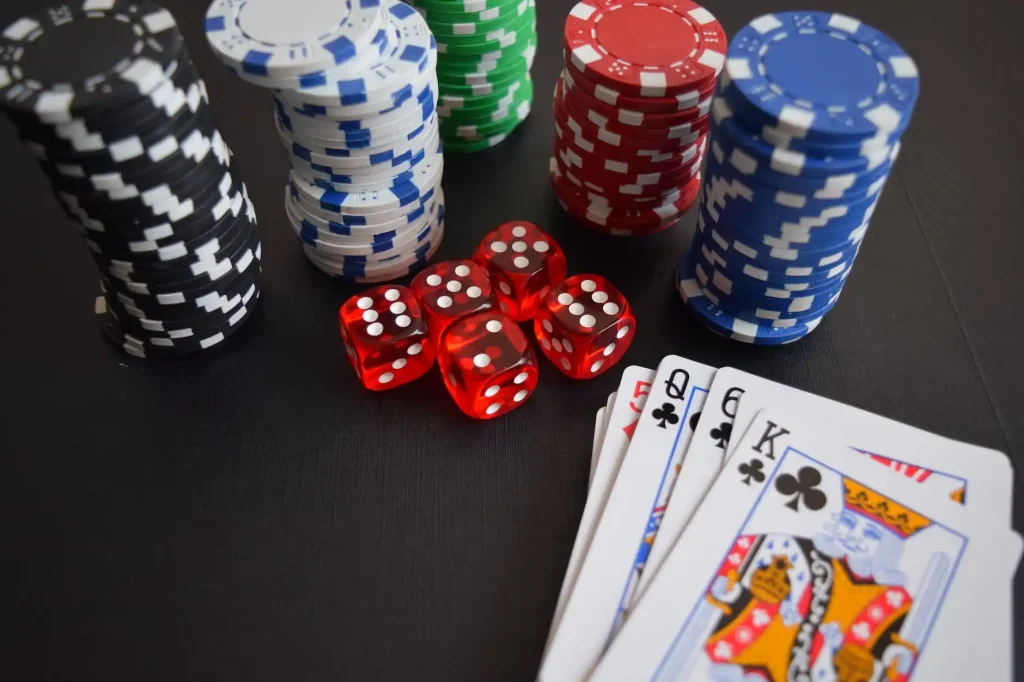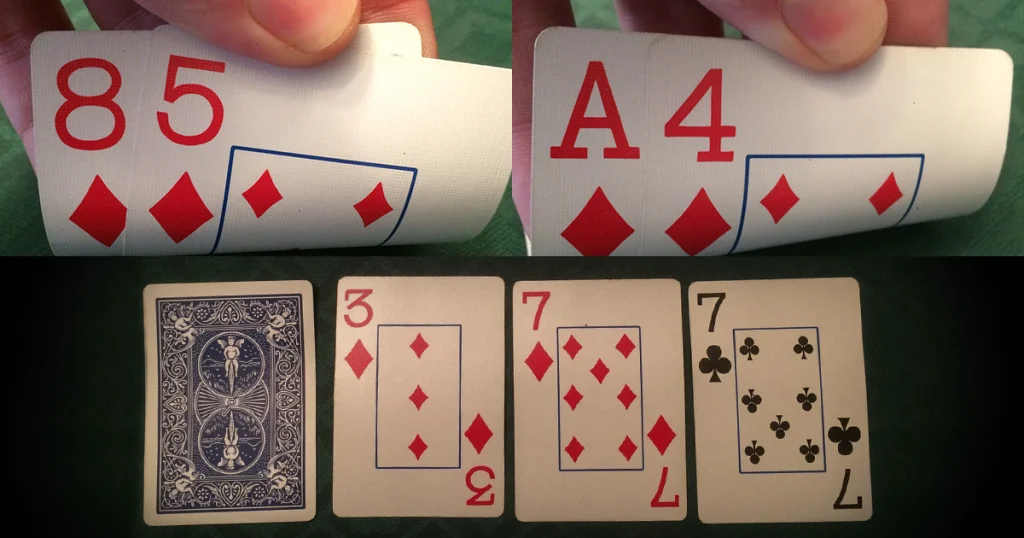Poker tricks are the actions of a player in the process of trading in order to create a wrong opinion among opponents about the strength of the player’s hand and / or to increase the amount and probability of winning. Such tricks in poker include: bluffing, check-raising, getting a free card, slowplay, stealing blinds, continuation bet. It should be noted that you should not abuse any of the techniques: they are all good in a limited amount and have not only positive, but also negative sides, which are especially pronounced when used excessively.

Main article: Bluff
Bluff (English bluff) – a bet or raise in a game with a hand that is unlikely to be the best at the moment. A distinction is usually made between a pure bluff, a bet with a hand that is not only currently weak but has little chance of improving before showdown, and a semi-bluff, a bet with a weak hand that has a significant chance of improving to a winning hand.
In a check-raise, a player checks his move during the betting with the intention of raising when someone else bets after him. Check-raises are commonly used in the following situations:
The negative side of check-raising is that opponents may not bet, in which case they will just get a free card. Therefore, a check-raise is usually only used when there is a strong certainty that someone will bet. Most often this happens on the flop against a preflop raiser (the player who attacked on the preflop) or in the subsequent stages of the game against an aggressive player who has some kind of combination in his hands and the cards on the table do not pose a serious threat.
A player can raise on the flop from last position with a drawing hand so that, fearing a strong hand, all opponents check on the turn. In this case, the player, if he did not receive the required card, can say “check” himself, thus getting the opportunity to see the river at no additional cost, that is, he receives a free card (English free card).
A free card is most often attempted with overcards, straight draws, or flush draws. Like other tricks, this has the disadvantage that the opponent can reraise, in which case, instead of saving a bet on the turn, you have to pay two extra on the flop.

Slowplay (English slowplay, sandbagging) is a passive drawing of a very strong hand in order to keep as many players as possible in the game and collect the maximum pot. Ideally, slowplay should allow opponents to improve enough to keep playing and call bets, but not enough to beat the player. Slowplay is not recommended if:
Blind stealing is a pre-flop raise from late positions, if no one has entered the game before, in order to force the players in the blinds to fold and get their bets without playing. Unlike playing preflop from late positions, you can try to steal blinds with almost any card, in principle, blind stealing can be considered as a kind of bluffing under strictly defined conditions.
Naturally, the players in the blinds do not want to lose their required bets, so in response to an attempt to steal the blinds, players often defend the blinds (English blinds defense) – they give a reraise. The general principle of attacking the blinds and defending them is simple – if the flop does not help either of the players, then the player who raised last will have a significant advantage, it is likely that his opponent will simply fold to the bet, believing that the opponent has a better card.
A continuation bet or continuation bet is a bet made on the flop by a player who raised before the flop, regardless of whether the flop improved his combination. A continuation bet is a type of bluff. This bluff is usually effective for the following reasons:
An effective way to deal with players who use too much continuation bet is a check-raise on the flop.

Floating is also a frequently used strategy in modern poker (especially online). The essence of this technique is to enter under the opponent’s raise and then call his bet on the flop and raise it consistently on the turn and river. The purpose of these actions is to knock the opponent out of the pot, and the actual cards of the player making the float are not very important. It is important to remember that this technique can only be performed on a safe board and only against a strong opponent, since a weak opponent will call your bet on the third pair. Also, do not get carried away with this technique and try to float several opponents.